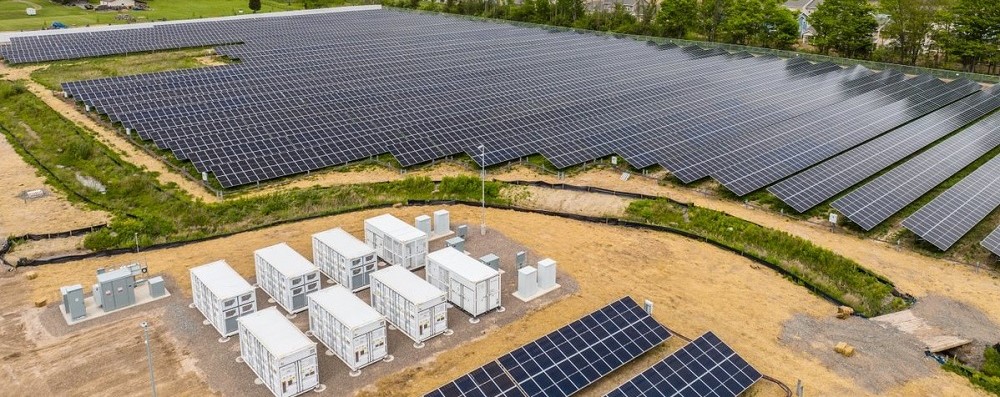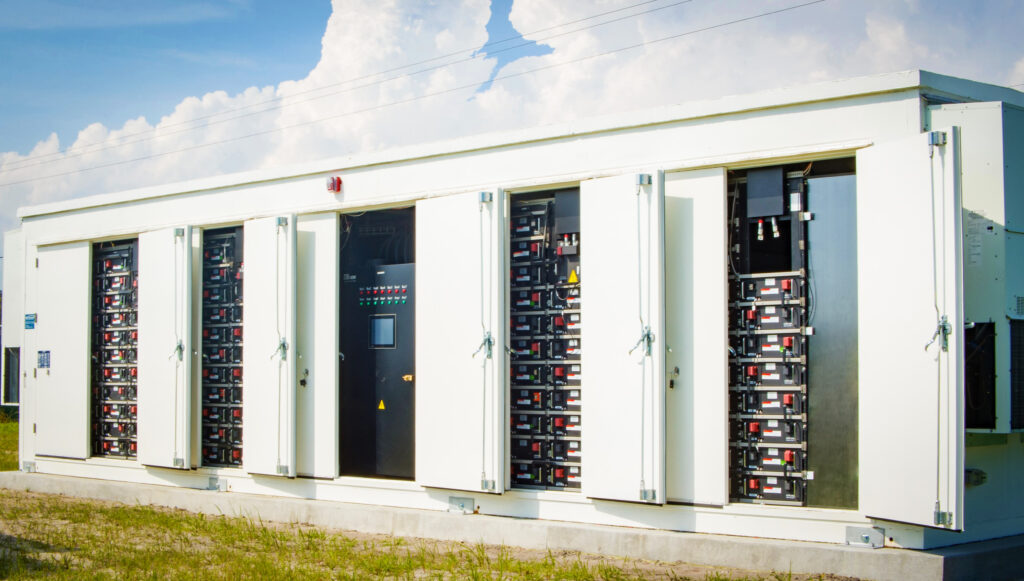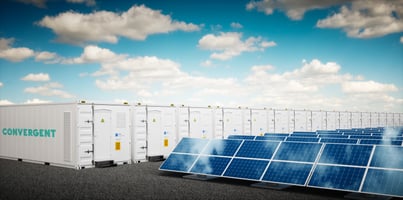The Battery Storage Revolution: How it Happened and Why it Matters

Power demand in the United States is growing, fast.
After decades of little to no growth—2% per year or lower—we’ve gotten used to managing an essentially flat system. That’s no longer reality. The forecast for peak demand growth by 2028 doubled in a single year: 2.6% expected in 2022 and 4.7% expected in 2023 (source: FERC filings). Signals within 2024 based on data center and manufacturing growth, increased electrification, etc., suggest that is still an underestimate.
Meeting this demand—keeping the lights on with affordable, clean, reliable power—we’ll need to do things differently. Energy storage, most often lithium-ion battery storage, will be a critical tool to avoiding a future crisis.
Battery storage systems allow electricity to be moved to when it is needed most, such as charging batteries with solar power in the afternoon then discharging in the evening. Almost half of the battery storage in the US today was deployed since the start of 2023, and Wood Mackenzie forecasts another doubling through 2027.
We are officially in the battery storage revolution, and it could not have happened soon enough.
In this blog, we'll cover the driving forces behind the surge in demand for battery storage and the crucial role that battery storage is playing—and will continue to play—in accelerating the clean energy transition.

What is Driving the Battery Storage Revolution?
In the last few years battery storage growth has been driven by both falling capital costs and local factors.
Lithium-ion storage has gotten significantly cheaper since our business, leading energy storage developer Convergent Energy and Power, was founded, back in 2011. The cost of lithium-ion batteries has dramatically declined due to the expanding electric vehicle market and related manufacturing economies of scale; prices fell 80% between 2010 and 2017. Although Covid-19 supply chain issues and global conflicts continue to impact costs, the costs of battery storage have been essential to the rapid growth of the sector.
Geographically, growth has been fastest in areas with some combination of expensive peak power and helpful policies, such as California, Texas, and New York.
California (with aggressive clean energy goals) and Texas (with volatile energy prices and a lot of renewable energy) have the most installed battery storage systems in the United States, with 8 GW and 5 GW, respectively. In April 2024, for the first time ever, batteries were the single largest contributor to California’s grid during an evening peak; in early May Texas (ERCOT) set a new simultaneous battery dispatch record of 3.15GW.
United States Battery Storage Deployment: Room for Growth
We’re far from done with battery storage. California alone expects it may need around 52GW of energy storage to meet its ambitious goal of 100% clean electricity by 2045, and developing these energy storage systems can take time.
A key driver for the next few years is the Inflation Reduction Act (IRA), the largest and most ambitious investment in climate action that the United States has ever made.
It provides a tax credit covering 30% or more of the cost of the battery, including standalone storage systems. The credit can exceed 30% for certain systems, such as those manufactured in the US or supporting low-income communities. Before the IRA, energy storage could only access smaller tax credits when paired with solar generation (solar-plus-storage).
Today, battery storage is an increasingly popular solution for energy-intensive businesses and utilities looking to reduce energy costs, increase reliability, and improve sustainability.
Why Energy Storage is the Linchpin of the Clean Energy Transition
Energy storage is the linchpin of the clean energy transition. The more renewable energy on the grid, the better—but these resources only produce power when the sun is shining, or the wind is blowing. When battery storage is paired with solar PV, batteries can utilize solar energy whether or not the sun is shining. In other words, energy storage can “firm up” renewable resources, maximizing their value to the grid.

Historically, power on the grid has flowed in one direction (from generation to transmission to distribution to customers) but with more and more customers producing their own power, i.e., solar panels at businesses or residences, power is now flowing in multiple directions. The grid was not built for this. Nor was it built for the proliferation of extreme weather events produced by climate change.
The combination of solar arrays and industrial or utility-scale batteries provides a flexible, proven, multi-use solution to meet the electric grid’s—and the climate’s—21st-century challenges, accelerating the clean energy transition.
The Benefits of Industrial and Utility-Scale Battery Storage
Businesses and utilities are adopting battery storage and solar-plus-storage in growing numbers.
For energy-intensive businesses, battery storage can lower energy costs by storing energy when it’s cheap and dispatching it when it’s expensive. It does not require any changes to the way a facility runs and can respond in milliseconds, ensuring power consistency and quality during grid events. Further, energy storage is used to store and dispatch renewable energy including solar and wind power.
For utilities dealing with an increasing amount of renewable generation, energy storage is a critical tool for ensuring reliability in the face of growing intermittency. While solar and wind provide energy—utility-scale energy storage is the proven pathway to increasing capacity, deferring costly system upgrades, and addressing power quality concerns. Additionally, battery storage and solar-plus-storage systems can significantly reduce wholesale demand or energy costs.
Learn More and Connect with Convergent
The future of energy is already here.
Convergent has been in the energy storage industry since its infancy, more than a decade ago. Throughout that time, we’ve gained experience and expertise, working closely with businesses and utilities to take the hassle out of energy storage by building, owning, and operating systems on their behalf. We’re proud to say that it has never been easier to integrate energy storage into your business or utility and the time has never been better.

To sum it up, the future of energy depends on our ability to store it. We need energy storage to accelerate the clean energy transition, reduce costs, and increase reliability for businesses, utilities, and communities. We need to mitigate the impact that extreme weather events, including hurricanes, have on our grid. And we need to prepare for more stress on our grid infrastructure as result.
To learn more about how an energy storage system or solar-plus-storage (paired solar PV and battery storage) can benefit your business or utility, schedule a free, no-obligation introductory call with our team today.


